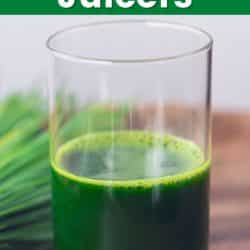Top Wheatgrass Juicers (Types and Models)
If you’re tired of spending money at juice bars for wheatgrass shots, consider getting your own wheatgrass juicer at home. This article reviews the top types and models of wheatgrass juicer to start making your own juice, plus information on the health benefits of wheatgrass.
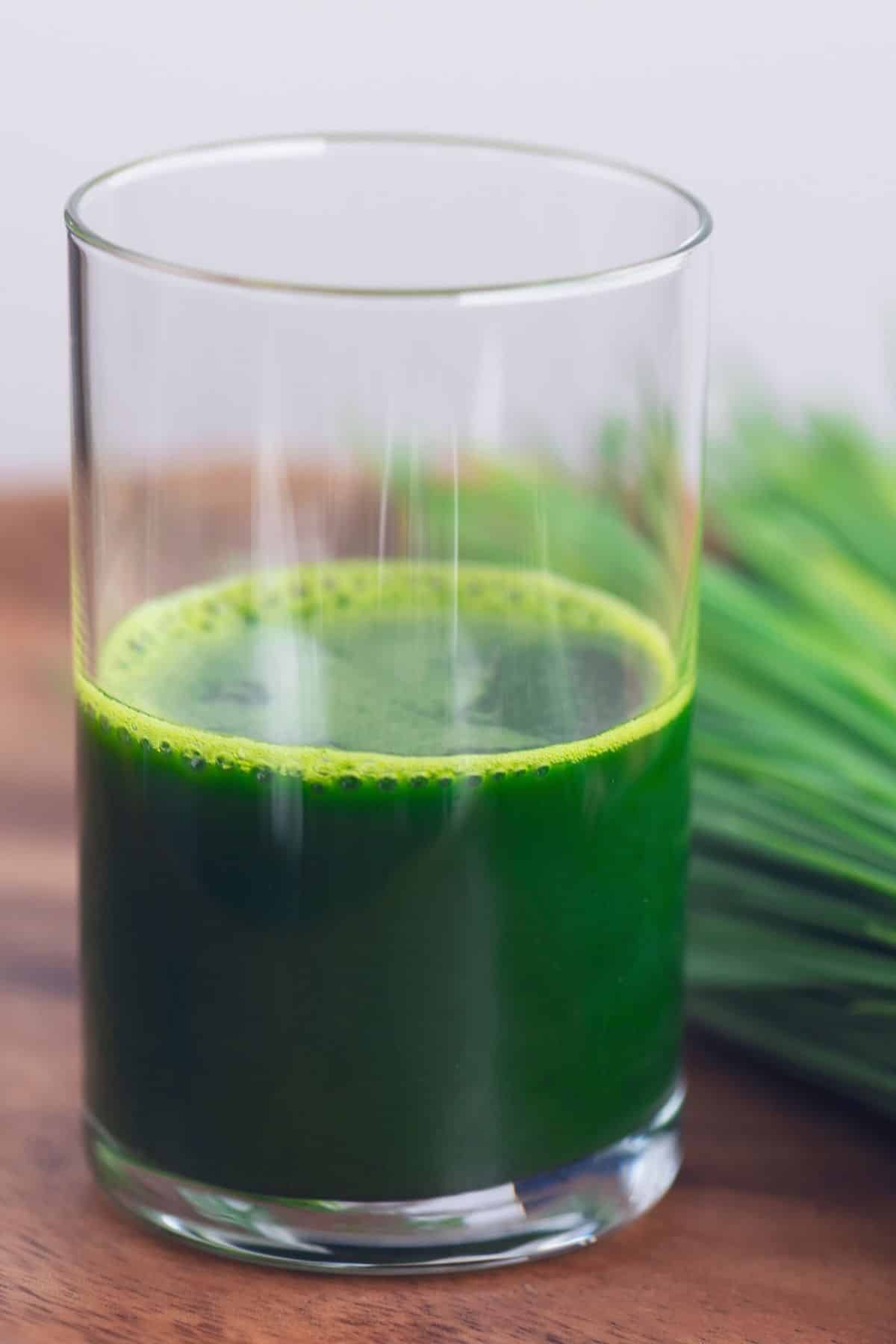
Juicing Wheatgrass Overview
Juicing wheatgrass is the easiest way to convert the grass into a convenient form you can enjoy on daily basis.
It has a strong, earthy flavor and is definitely an acquired taste. But it’s easy to combine it with other ingredients – in your morning smoothie, for example – to make it more palatable while you grow accustomed to the unusual flavor.
If you would prefer to take wheatgrass as a shot, you can try adding a touch of lemon to it – the sharpness works well in counteracting the taste.
Or you can simply mix wheatgrass with another juice! Carrot and wheatgrass complement each other well, especially if you add a little fresh ginger too.
Top Wheatgrass Juicers
Wheatgrass is a fibrous food, so the type of juicer you would typically use for fruits or orange juice don’t work as well with it.
Instead, you need a juicer specifically designed for wheatgrass, known as a masticating juicer. This will press the grass to extract the juice without applying centrifugal force and using a fast-spinning blade.
Don’t worry, you don’t need commercial wheatgrass juicers to get the best results. A quality manual juicer or electric wheatgrass juicer will also yield a delicious juice with tons of nutritional benefits.
A quality wheatgrass juicer will also separate the juice from the pulp, so you won’t need to strain the juice afterward.
1. Manual Masticating Juicers
There are two different types of wheatgrass juicers.
The first type are manual wheatgrass juicers, which means that no heat is produced. This is important, as it gives you the best quality juice without depleting its nutrients.
This is a great choice for ease of use and price. The only downside is that you can’t use these types of juicers like a regular juicer in that it can only juice wheat grass and nothing else.
Recommended model:
This manual wheatgrass juicer from Handy Pantry is an excellent example of a hand crank manual model.
It clamps onto your kitchen counter and has a flared hopper to keep the wheatgrass upright as you extract the juice. It is made from stainless steel and very easy to disassemble for easy cleaning.
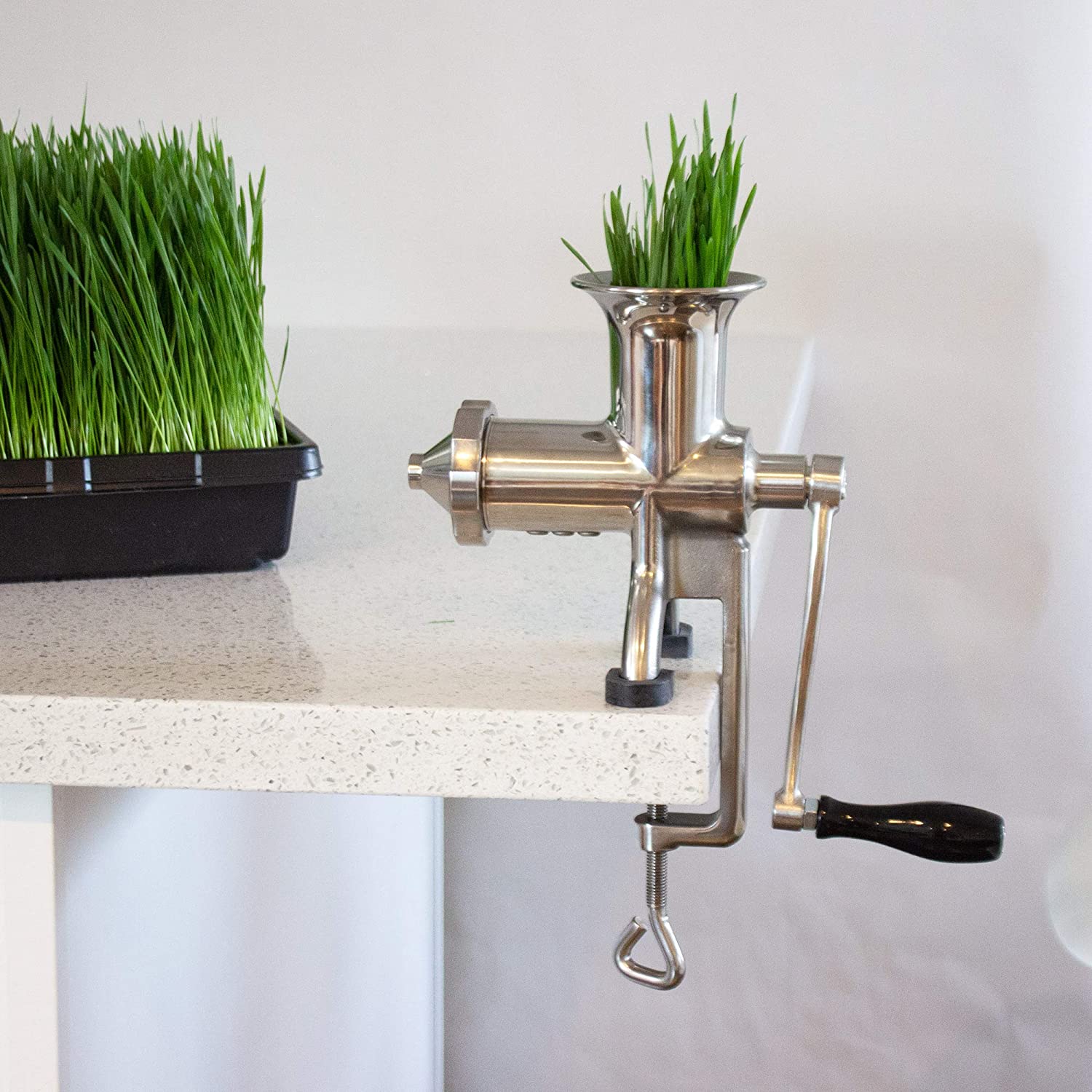
2. Electric Masticating Juicers
The electric masticating wheatgrass juicer might be a better choice if you want a more versatile appliance that can also be used for other fruits and vegetables, including leafy greens and soft fruits.
Some electric juicers have different settings for juicing hard or soft produce, efficiently separating the juice from the pulp.
An electric masticating juicer will have a powerful motor so it can work at slow speed or high speeds. You’ll pay more than the manual unit, but it’s the best choice if you want to make juice frequently or in large quantities.
Recommended models:
The second type of best wheatgrass juicers are electric wheatgrass juicers – like the Jocuu Slow Juicer or the Omega Masticating Juicer – are designed to operate at low speed, so very little heat is produced.
A cold press juicer like the Jocuu or Omega models are made for maximum juice yield at lower speeds than a centrifugal juicer. They can also be used to make nut butter and nut milks.
It’s hard to pick the best juicer, but these are two excellent options.
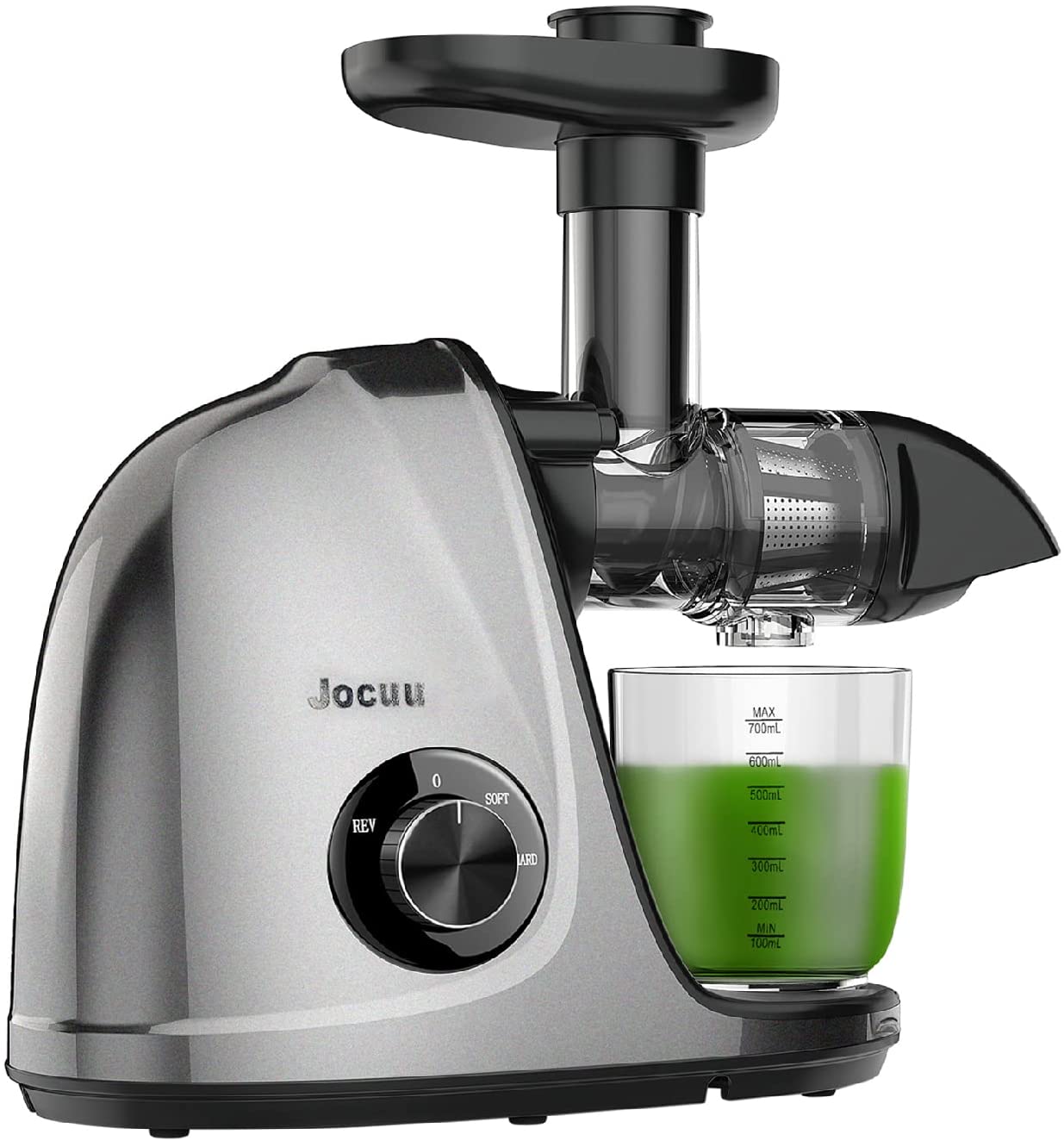
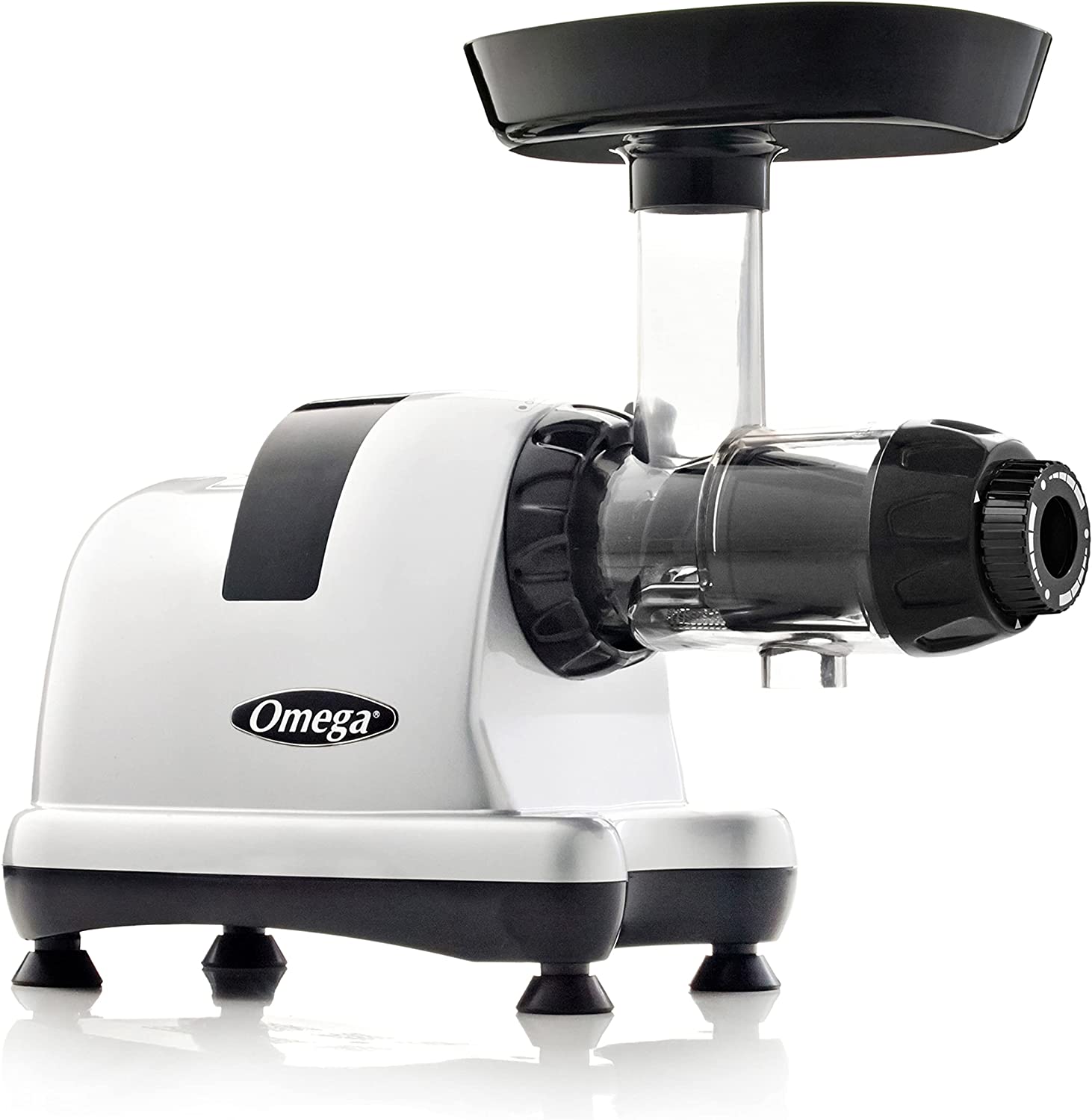
Manual vs. Electric Wheatgrass Juicers
The only downside to masticating juicers is that they tend to be a bit more expensive than centrifugal juicers.
But, if you really want to reap the amazing health benefits of wheatgrass, then it may be worth the extra expense for the very high quality of the juices they produce.
What is Wheatgrass?
Wheatgrass is the young grass of the common wheat plant Triticum aestivum.
This thick, brightly colored grass is harvested around 7 to 10 days after sprouting, before it has grown to its full size. Easy to grow at home (with or without soil), wheatgrass is considered to be a superfood because it is so rich in nutrients.
Wheatgrass is a great source of antioxidants – including vitamin C, vitamin E, and glutathione. It also provides iron, calcium, some protein, and a range of amino acids.
What’s more, there is strong scientific evidence linking wheatgrass juice to some considerable health benefits.
For instance, A 2015 article discussed how the antioxidants in wheatgrass can help protect against cancer, while research carried out in 2017 showed how it could be particularly useful in fighting oral cancer.
This protection may come from the strong boost that wheatgrass gives to the immune system, or from the high levels of chlorophyll it contains. In fact, it is the chlorophyll content of wheatgrass that gives it its nickname of “green blood.”
Wheatgrass is undoubtedly one of the best vegetables to juice.
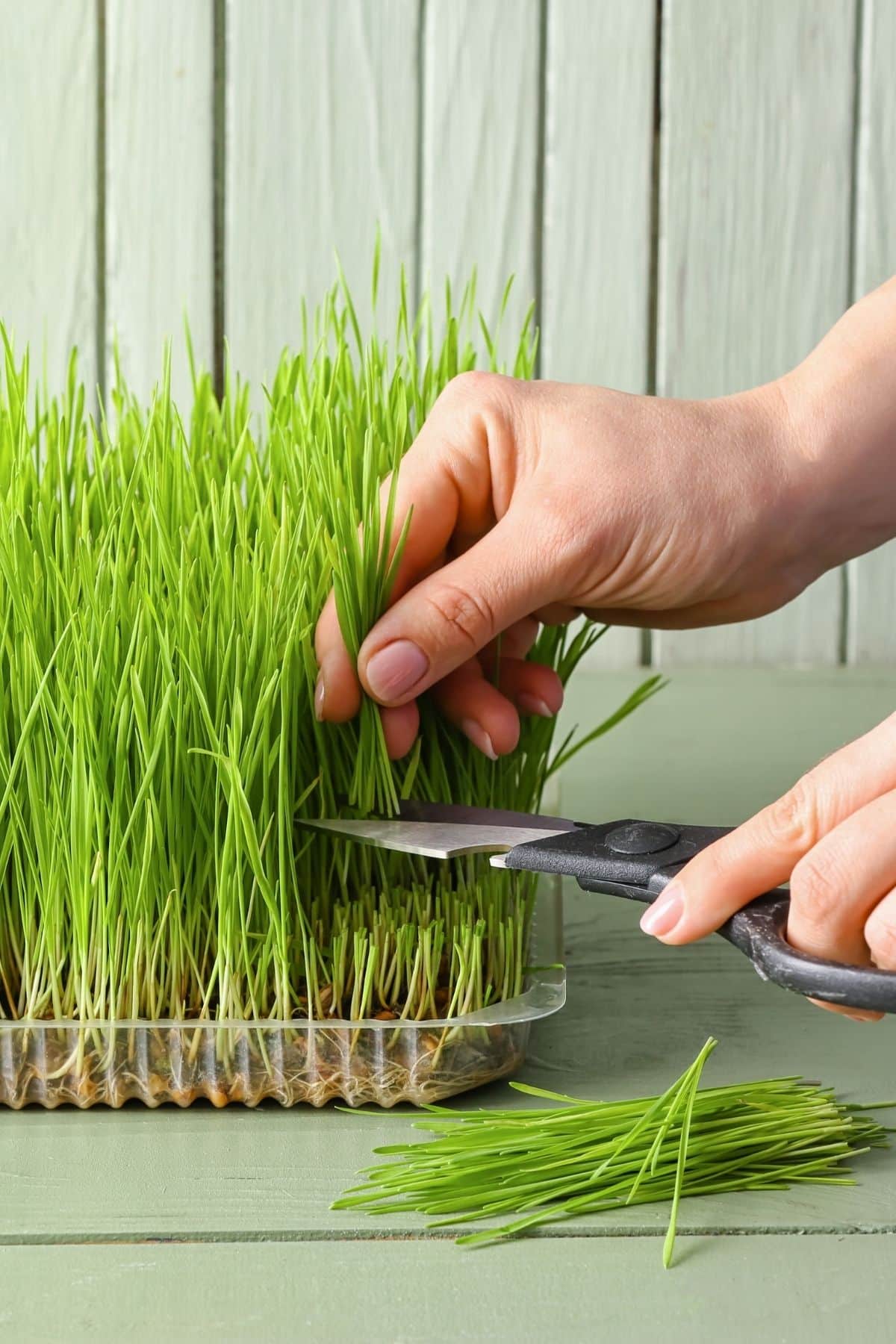
Juicing Wheatgrass FAQs
Since wheatgrass comes from a growing wheat plant, you might assume that – like wheat – it contains gluten. The good news is that there is no gluten at all in the grass – gluten is only found in wheat seed kernels. Because wheatgrass is harvested so early in the plant’s development, these shouldn’t have had time to develop.
However, if you buy commercially prepared wheatgrass you can’t be quite sure of exactly when it was harvested. There is also the risk that it may have been cross-contaminated. For that reason, it is really worthwhile making your own juice if you have celiac disease or non-celiac gluten sensitivity.
Please note, however, that you probably do need to avoid wheatgrass if you have a serious wheat allergy. Please ask your healthcare provider for advice related to your specific situation.
Before you store fresh wheatgrass, make sure it is totally dry. Any moisture can cause it to spoil more quickly. Transfer it to an airtight container or tightly sealed food-safe bag and place it in the refrigerator, where you can keep it for up to 7 days.
Ideally, you should then juice the amount you need for one shot and drink it straight away, rather than juicing it all in one go ahead of time. This is in order to preserve its nutrients, which begin to deplete as soon as it is exposed to air.
That being said, we all have busy lives and it is not always easy to find the time to make wheatgrass juice on a daily basis.
In that case, you could certainly choose to freeze some. Just remember that this will kill off some of the enzymes it contains and may also reduce the benefits of the chlorophyll.
Try freezing wheatgrass juice in ice cube trays, as each cube will be the ideal size for a shot. Ideally, try to use them within seven days – after that, the nutritional value of the juice is likely to decline rapidly.
Because wheatgrass is so unique, your body may have a little trouble digesting it at first. If you are new to wheatgrass juice you might find that you experience nausea, an upset stomach, a headache, or constipation. The good news is that these potential side effects tend to settle down within a week or two as your body becomes accustomed to it.
For that reason, the best option is to start with just an ounce or two at a time. You can follow this up with a glass of water, which should help prevent or reduce any abdominal discomfort. Ideally, try to drink this first thing in the morning, before breakfast. Most people find it works best on an empty stomach, whilst the little energy boost it gives is a great way to start the day!
As your body gets used to wheatgrass, you can increase the amount you have to 4 ounces at a time. You could also increase the frequency, adding a shot in the evening too.
Juiced wheatgrass tastes like what you would expect: juice grass. It is not necessarily unpleasant, but it isn’t great-tasting. That’s why most people take wheatgrass juice as a shot or try to mix it with other flavors like lemon juice to help mask the grassy taste.
More Vegetable Juices You Might Like
- Beet Juice
- Beet Carrot Juice
- Carrot Juice
- Celery Juice
- Cucumber Juice
- Parsley Juice with Carrots & Celery
Don’t Miss These Juicing Resources!
Conclusions
Wheatgrass juice offers many evidence-based health benefits, particularly when it’s made right at home and enjoyed as soon as it’s pressed. I hope you feel inspired to give it a try, giving you and your family access to this high-quality source of nutrients on a daily basis.
Don’t forget to join my newsletter list to get exclusive clean eating recipes and tips. The newsletter is 100% free with no spam; unsubscribe anytime.
About the Author: Carrie Forrest has a master’s degree in public health with a specialty in nutrition and is a certified holistic nutritionist. She is a top wellness and food blogger with over 5 million annual visitors to her site. Carrie has an incredible story of recovery from chronic illness and is passionate about helping other women transform their health. Send her a message through her contact form.
Note: this post is for informational purposes only and is not intended as medical advice. Please consult your healthcare provider for recommendations related to your individual situation.


